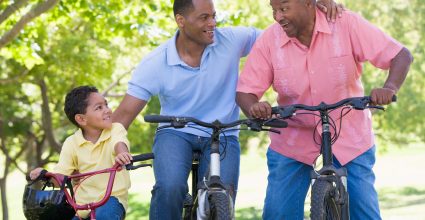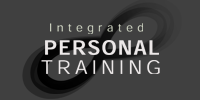
HOW TO EXERCISE AT EVERY AGE
Our bodies are constantly changing throughout the course of our lives and at each stage we will benefit from different types of exercises and activities to achieve a healthy mind and body. While our exercise habits are best nurtured in childhood, it is never too late to start some kind of exercise regime. “The key is to know your own body, to be aware of its needs and to respond appropriately to these changes as you age” says Fabio Gomez of Integrated Training in London.
Kids: it’s playtime!
Get your kids into action! All general physical activities will help with your child’s physical and psychological development. Take your child to play at the park, playground or pool, let them run, jump, climb and swim! Walk with them and try to avoid leaving the little ones in the pushchair- even a little walk is good exercise for them! A one hour trip to the park where they can run and jump hits the recommended quota of one hour of physical exercise every day!
Teens to 20s: higher energy levels
This is a time when our bodies are developing and our immune system is strengthening – which thus requires lots of sleep and natural energy boosts. These years are crucial for working out to strengthen muscles and bones combined with a diet rich in nutrients and proteins to foster growth.
The combination of strength training (weights) and cardiovascular exercise for at least 20 minutes three-to-six days a week is perfect to keep you energised, well-rested and strong whilst also revving up your metabolism. Choose activities you enjoy such as dancing, cycling, walking, jogging, swimming, surfing or boxing. Doing something you enjoy takes all the pressure and thought out of exercise. Don’t forget to warm up and cool down to prevent pulls and strains!
Teenagers can get health benefits from any activity they enjoy – ideally for an hour a day.
30s to 50s: time for a routine
You know who you are, what you want and are more disciplined. But a busy career, home and family can get in the way. No time for exercise? That’s not true! It’s all about prioritising –and exercising should be up there with eating and sleeping. Walk to work, or put on some music when you get home and dance. Whenever possible, take the stairs at work, bike or walk to the grocery store, hike in the woods and play with your children. Practise regular meditation to encourage relaxation, focus and comfort.
Fabio advises women to focus in particular on strength training as “women of this age group gradually tend to lose their bone mass, they should concentrate on this (strength training) to protect their bones and to improve their muscle strength at least two or three times a week.”
Try to do some form of aerobic exercise on a daily basis. Beginners should try to include stretching and flexibility exercises. Create clear workout goals and stick to them. Even 15 minutes of exercise a day can lead to immediate health benefits such as a stronger respiratory system, reduced stress and improved sleep. Do cardiovascular workouts for 30 minutes to an hour three-to-five days a week. Try fun classes like spinning, step, kickboxing or martial arts. Keep your joints flexible and improve balance by doing yoga or dance. If you experience joint pain, opt for low-impact walks or swims. Do at least 10 minutes a day of weights. Try 15 repetitions on biceps, triceps, shoulders, hamstrings, quadriceps and calves. This will keep your muscles strong and prevent bone loss. Core exercises improve posture, digestion and stability; this is vital as nowadays our lives happen around a computer in an unhealthy sedentary life. Pilates, belly dancing or abdominal and back training build core strength.
40s and 50s: midlife crisis
The term ‘midlife crisis’ has become a cliché. Nevertheless, middle age can be an emotional low point. A 2008 study of two million people in 80 countries found that in middle age, there is the highest risk of depression – around 40 for American women and 50 for men. On the positive side, the data also suggests that your mood improves from the 50s onwards! One of the best ways to promote emotional wellbeing is to get your blood pumping – even a simple daily walk will do. And if any of your bad habits such as smoking or heavy drinking have continued into middle age, now is the time to kick them.
60s and onwards: let’s move!
Add years and improve your quality of life. Senior citizens can enjoy active bodies and good health well into their ‘80s and beyond! Talk with your doctor to find a diet and exercise plan that works for you, particularly if you have health concerns or chronic illnesses. Workouts don’t need to be overly structured and can concentrate more on flexibility and balance. Aerobic and strength training exercises can continue as this benefits those suffering from various medical conditions more frequent in this age group.
Don’t overdo it! Incorporate cardiovascular exercise at least three days a week by walking or swimming. Avoid straining your heart. Cycle, doing the garden or cleaning your house can be enough. Weight exercises keeps your bones and muscles strong, preventing injuries, promoting independence and improving mobility. If you cannot hold weights, try doing arm and leg repetitions without them. Retain balance and flexibility by stretching or doing low-impact water aerobics. Work on touching your toes and nose, walking in a straight line and standing on one leg.
“There are no real limits,” says Fabio. “Socialising is also a major component of physical health. It can improve your heart rate, reduce depression and pain, lower blood pressure and help fight insomnia. Be creative! Take up lawn bowls, join a dance class or even something simple like rocking your grandchildren can help. Laughing and lovemaking not only make you happy but also work those abs and being with others will motivate you to get out, boost your mood and share your heart and soul”.
The recommended amount of activity is 30 minutes on most, if not every day.
Remember that adults who are physically active not only have a lower risk of disease, depression and chronic pain from conditions like arthritis and back pain, but are also less vulnerable to dementia than their inactive peers. “Walk 30 minutes a day, park just that little further away from the supermarket… do whatever it takes,” says Fabio.
Remember, physical fitness should be an important part of all our lives, no matter what age or gender. After all, a healthy lifestyle is something that will not only help you live longer, but also help make your life more enjoyable.





